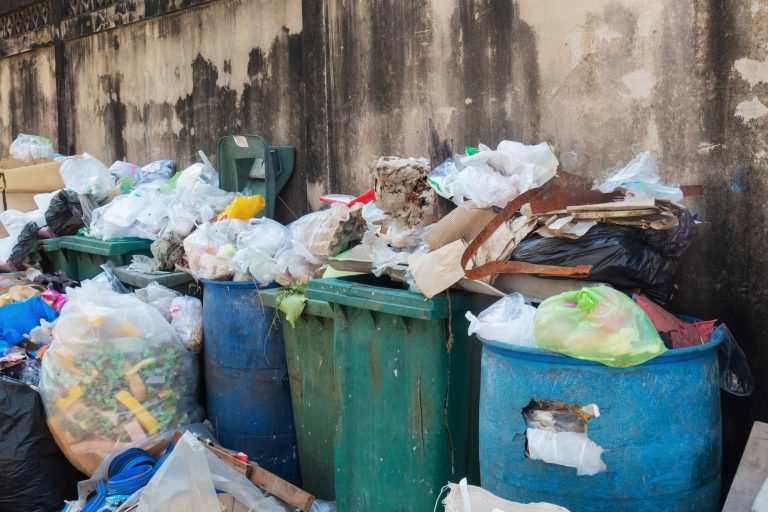According to a 2020 study, humans manufacture about 400 million tonnes (440 million tons) of plastic annually. But, unfortunately, about 175 million tonnes (193 million tons) are in landfills.
There are several types of plastic, propylene being one of them. It is a sturdy product used to make toys, packaging materials, food containers, bottle caps, and more. Today, propylene accounts for almost a third of the world’s plastic waste, but only about 1 percent is recycled.
But that’s about to change thanks to efforts by Australian researchers who harnessed backyard mold to break down this stubborn material.

Fungi that can eat plastic
The researchers from the University of Sydney harnessed two strains of fungi found in soil and plants to attack small lab samples of propylene. They used two fungi — Aspergillus terreus and Engyodontium album — and within 140 days, the plastic was completely broken down.
First, the material had to be preheated with UV light, chemicals, and heat to soften it and make it easier for the fungi to “latch on.” Then, after being “fed” to the fungi, it reduced the quantity by 21 percent within the first 30 days and 25-27 percent within the first 90 days of incubation. It then was completely degraded in 140 days.
Ali Abbas, a chemical engineering professor who supervised the research, believes this is the first step in the fight against this insidious pollution.
“It’s the highest degradation rate reported in the literature that we know in the world,” Abbas said.
The team leader, Amira Farzana Samat, says their research will be instrumental in designing natural and sustainable ways to treat waste plastic. Now they have the difficult challenge of scaling up their lab work to meet Australia’s national problem — and probably the world’s.
Researchers hope to make the degradation even faster by modifying critical elements of the experiment, such as temperature, size of plastic particles, and the amount of fungi used.
“Plastic pollution is by far one of the biggest waste issues of our time. Unfortunately, most of it isn’t adequately recycled, so it often ends up in our oceans, rivers, and landfills. It’s been estimated that 109 million tonnes of plastic pollution have accumulated in the world’s rivers, and 30 million tonnes now sit in the world’s oceans – with sources estimating this will soon surpass the total mass of fish,” said Mrs. Samat.
Is fungi the solution to the plastic problem?
In the past decades, we’ve seen a lot of research on using microorganisms to degrade these materials faster. However, propylene and other plastics take hundreds of years to break down. This environmental problem becomes larger as this waste grows every year.
In theory, recycling these materials should be easy because of their makeup. It requires you to break down the material’s repeating subunits and reassemble them into a new unit. However, it becomes difficult because so much of this material is out there. And when people dispose of these, they mix different kinds of plastics with other wastes, which makes it almost impossible to separate and recycle.
The good news is that more than 400 microorganisms have been found that break down plastic biologically. Among these microorganisms, fungi are adept at degrading these materials because of their “production of powerful enzymes.”
Professor Dee Carter, an expert in mycology (study of fungi), believes fungi’s superpower is breaking down different substrates.
“Often, these fungi have evolved to break down woody materials, but this ability can be repurposed to attack other substrates. This is why we find fungi growing on all sorts of artificial materials like carpets, painted furniture, tile grout, shower curtains, upholstery, and even car headlights,” she said.

A future large-scale plastic waste solution
This solution may not become an off-the-shelf remedy for consumers. However, it may be a perfect solution for huge companies’ and municipalities’ waste management efforts. In about three to five years, Australian researchers hope the plastic-eating fungi can be used to degrade these troubling materials in landfills.
Still, there are concerns about human addiction to such products. For example, what happens when people discover that there are fast ways to reduce the problem? Some fear people may not reduce the amount of plastics they use.
Also, the fungi are not adept at degrading highly crystalline forms of plastic that account for a more significant percentage of what is produced. Because of this, the researchers believe the solution to the problem is multifaceted.
“We can’t afford to wait; we do need to act. We need behavioral issues; we need social issues, we need business issues; all of these need to be resolved around the plastics problem. The technology is only half the solution,” Professor Abbas told the Australian Broadcasting Corporation.







